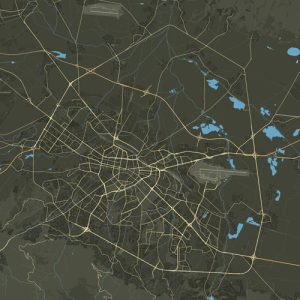Following the fall of the socialist regime, Sofia experienced a significant surge in private construction, marking a new era in the city’s architectural and urban development. This period saw the erection of new modern buildings, many of which were realized with the involvement of foreign investment, reflecting the city’s opening to global economic and architectural influences.
A notable milestone in Sofia’s urban infrastructure was the inauguration of the first stations of the Sofia Metro at the beginning of 1998. This development was a major step forward in enhancing the city’s public transportation system, providing residents and visitors with a fast, efficient, and modern mode of travel. The metro system’s expansion has since played a crucial role in alleviating traffic congestion, improving air quality, and connecting different parts of the city more effectively.
In 2015, another landmark was added to Sofia’s skyline with the completion of the Capital Fort building. Situated at the city’s entrance from Tsarigradsko Shosse Blvd., Capital Fort became the tallest building in Bulgaria, surpassing the Rodina Hotel, which had held the title for the previous quarter-century. Standing as a symbol of Sofia’s dynamic growth and modernization, Capital Fort embodies the city’s aspirations towards becoming a contemporary European capital, showcasing the blend of historical heritage and modern architectural achievements that characterizes Sofia today.

